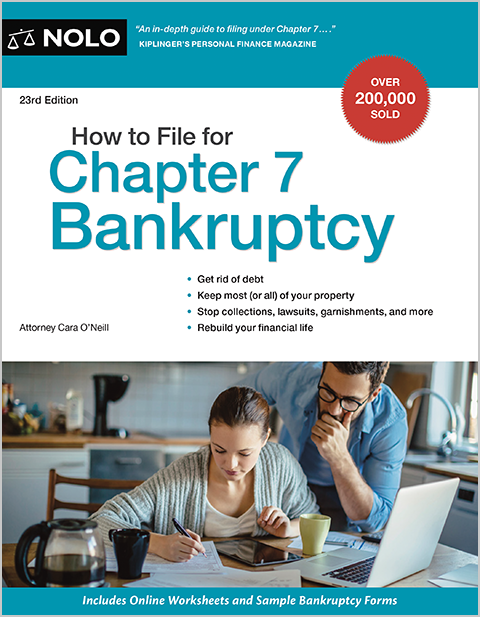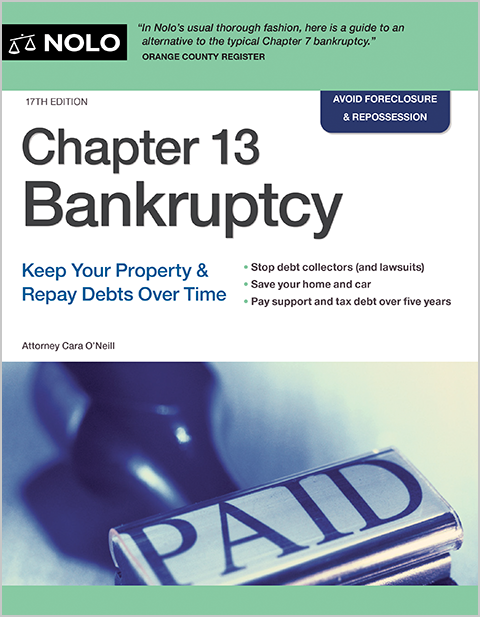Involuntary bankruptcies are rarely filed against individuals. Learn more.
Filing for bankruptcy doesn't just help those in debt. It protects creditors, too. One of the powers given to creditors is the ability to force unwilling debtors into bankruptcy against their will in what's known as an involuntary bankruptcy.
Involuntary bankruptcies don't occur often, and creditors usually file them against business organizations rather than individuals. The involuntary bankruptcy process begins when creditors follow the procedure for filing a bankruptcy action on behalf of the person or company owing money. You can start with the basics of business bankruptcies by reading Small Business Bankruptcy.
Creditors Target Debtors With Assets for Involuntary Bankruptcy
It shouldn't be surprising that creditors file involuntary bankruptcies against companies and individuals with assets, carefully investigating the potential bankruptcy target's finances before initiating an involuntary bankruptcy. The reasoning makes sense.
Creditors want to get paid, and forcing an involuntary bankruptcy on a person or business without sufficient assets to pay all creditors would be a poor move, resulting in additional lost revenues. Learn when someone might be personally liable for business debts.
When a Debtor Has Limited Assets
The strategy is different when an individual or business doesn't own much. When there isn't enough to go around, a creditor is better off grabbing whatever money and property is available outside of bankruptcy.
In this situation, creditors who act quickly understand that once bankruptcy is initiated, the automatic stay order prohibiting collection activities will stop creditors from collecting the debt independently. The creditors must share whatever gets recovered by the bankruptcy trustee appointed to the case.
However, creditors who recover assets before bankruptcy might have to return the funds after a bankruptcy filing. Learn about the trustee's "clawback" power in bankruptcy.
Before Filing an Involuntary Bankruptcy Petition
A creditor should consider the practical effects of an involuntary bankruptcy when the available assets might not adequately repay the creditor's debt, the most salient issue being the ability to collect the debt after bankruptcy.
Depending on the debt and chapter type, the bankruptcy will likely cut off the creditor's future ability to collect. However, some exceptions exist.
- Nondischargeable debts. Debts based on fraud and other criteria will survive the bankruptcy. However, the creditor might need to initiate litigation to have the court declare the debt nondischargeable.
- Debts owed by a company. Businesses aren't entitled to a debt discharge in bankruptcy, so collection after bankruptcy might be possible if the company continues to exist or emerges as another company engaging in essentially the same business (a debtor can't avoid an obligation by changing business names). However, selling company assets in bankruptcy typically liquidates the business, effectively closing it and shutting off the ability to collect later.
Learn when an individual can discharge personal liability for business debt.
How Involuntary Bankruptcy Works
An involuntary bankruptcy starts when one or more creditors file a petition with the bankruptcy court. A creditor can file an involuntary bankruptcy case under Chapter 7 or Chapter 11. Cases under Chapter 13 and Chapter 12 aren't permitted.
The bankruptcy petition must indicate which of the following two circumstances justifies the involuntary bankruptcy:
- the debtor isn't paying debts as they come due, or
- within 120 days, a custodian, receiver, or agent took control of the debtor's property to enforce a lien.
Once filed, the debtor can respond to the petition. If the debtor fails to do so, the court will allow the matter to move forward, and the debtor will have to participate in the bankruptcy.
If the debtor responds, the court will set a hearing and decide whether the bankruptcy should go forward. A judge who finds in favor of the debtor will dismiss the case. The judge might also require a filing creditor to pay the debtor's costs and fees.
The official individual and non-individual involuntary petition forms are on the U.S. Court's bankruptcy form page.
Involuntary Bankruptcy Limitations
Most involuntary bankruptcies are a collaboration between several creditors. If the debtor has more than 12 unsecured creditors, at least three of these creditors must join the petition. The three must collectively have at least $21,050 in unsecured debt outstanding from the debtor (effective from April 1, 2025, through March 31, 2028).
A solitary creditor can only file an involuntary petition if owed at least $21,050 and if the debtor has fewer than 12 unsecured creditors total (effective from April 1, 2025, through March 31, 2028). (11 U.S.C. § 303(b) - current amounts are published in the Federal Register.) Also, the creditors' claims for debt cannot be disputed or contingent. The debt amount must be known and not conditioned on some future event, such as a lawsuit judgment.
Involuntary bankruptcies can't be filed against banks, insurance companies, not-for-profit organizations, credit unions, farmers, or family farmers.
Need More Bankruptcy Help?
Did you know Nolo has made the law accessible for over fifty years? It's true, and we wholeheartedly encourage research and learning. You can find many more helpful bankruptcy articles on Nolo's bankruptcy homepage. Information needed to complete the official downloadable bankruptcy forms is on the Department of Justice U.S. Trustee Program website.
However, online articles and resources can't address all bankruptcy issues and aren't written with the facts of your particular case in mind. The best way to protect your assets in bankruptcy is by hiring a local bankruptcy lawyer.

